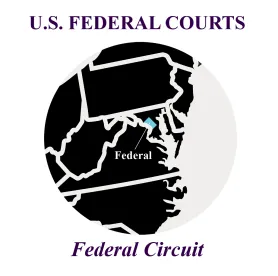The implications of the Federal Circuit’s Blue & Gold waiver rule – pursuant to which a disappointed offeror waives any protest grounds it may have had to the terms of a solicitation that the offeror could have, but failed to, raise pre-award – continues to reverberate in unexpected ways when applied to real-life procurement situations. In VS2, LLC v. United States, — Fed. Cl. — (Fed. Cl. 2021), the Court of Federal Claims (“COFC”) declined to further expand the Blue & Gold waiver rule to all challenges to a procurement action that could have been made pre-award, signaling that the edge of the Blue & Gold sword may be starting to dull and its reach limited.
In our two prior blog articles in this series, we examined two such situations where application of the waiver rule produced diametrically different outcomes. In our article on Inserso Corp. v. United States, 916 F.3d 1343 (Fed. Cir. 2020), we examined a split-panel decision in which the waiver rule was applied to bar a contractor’s post-award organizational conflict of interest protest grounds, because according to the majority, “the law and facts” in existence pre-award made it reasonably known to the contractor that a procurement error was likely to occur under the terms of the solicitation. In our follow-up article on Boeing Co. v. United States, 968 F.3d 1371 (Fed. Cir. 2020), however, we discussed how the panel in that case reached a different conclusion with respect to a post-award claim involving the Government’s application of a mandatory regulation to a contract governed by the Cost Accounting Standards (“CAS”). Specifically, in Boeing, the Court ruled the contractor did not waive its claim by not protesting an apparent conflict between the regulation and the CAS statute before award, because to have done so would have been “futile” given the mandatory nature of the regulation. These different results led us to analogize the Blue & Gold waiver rule as creating a kind of gambling transaction for government contractors. To borrow and modify a phrase from the late, great Kenny Rogers’ 1978 hit single, “The Gambler,” the waiver rule forces contractors to simply “know when to protest” – without clear, consistent guidelines as to how they should “know,” what they should “know,” or by “when” – lest they risk inadvertently waiving their protest grounds in a post-award bid protest action.
A year later, the waiver rule was thrust once again into the crosshairs, this time before the COFC. Fortunately for contractors, the COFC declined an invitation by the Government and the intervenor to transform the Blue & Gold waiver rule “into a broadsword capable of cutting down even meritorious arguments in a manner … the Federal Circuit[] has never sanctioned.” Instead, the COFC ruled it would not expand the waiver rule beyond the “narrowly defined circumstances” in which the Federal Circuit has already applied the rule.
VS2, LLC v. United States involved a solicitation issued by the Army for logistics support services at Georgia’s Fort Benning. VS2, LLC (“VS2”) initially won the award after the Army applied a nearly $20 million cost adjustment to account for what the Army had evaluated as unrealistically low labor costs submitted by Vectrus Mission Solutions Corp. (“Vectrus”), which before the adjustment had submitted the lowest cost proposal. Vectrus filed a post-award protest with the Government Accountability Office (“GAO”), challenging the upward cost adjustment to its proposal. The GAO sustained Vectrus’ protest and recommended that the Army terminate the task order issued to VS2 and issue the award, instead, to Vectrus. The Army took corrective action in accordance with the GAO’s recommendation, awarding the task order to Vectrus. After VS2 filed a post-award protest at the GAO that was dismissed as untimely under that forum’s timeliness rules, VS2 filed a bid protest action at the COFC, arguing the Army improperly switched awardees due to a flawed GAO decision that, in effect, “irrationally foisted back onto the Army” the risk associated with Vectrus’ low labor costs.
After briefing and oral argument, the COFC – in a decision authored by Judge Solomson – agreed with VS2, ruling the Army’s decision to award the task order to Vectrus was the product of a GAO decision that was erroneous as a matter of law. But before reaching that ultimate decision, the COFC first had to deal with what the COFC characterized as the Government and Vectrus’ “attempt to land a massive knock-out punch, in the form of a novel Blue & Gold waiver argument, that would have the effect of rendering VS2’s entire protest untimely.” Specifically, the Government and Vectrus argued that under Blue & Gold and its progeny (including Inserso), the waiver rule applied to all challenges a protester could have brought before contract award, including corrective action challenges. Thus, according to the Government and Vectrus, VS2’s post-award protest challenging the award of the task order to Vectrus was untimely, because VS2 should have raised any challenges it had to the GAO’s decision before the Army awarded the task order to Vectrus in accordance with the GAO’s recommendation.
The COFC rejected the Government and Vectrus’ invitation “to engage in such creative metallurgy,” holding instead that “[u]nless the Federal Circuit compels [the COFC] to do so, Blue & Gold cannot be expanded past the factual and procedural circumstances in which the Federal Circuit has applied it.” In reaching this conclusion, the COFC first recognized that while Blue & Gold remained binding precedent, the waiver rule emerged only because the Federal Circuit had “operationally-defin[ed] the nebulous statutory command in [28 U.S.C.] § 1481(b)(3)” – requiring courts to give due regard to “the need for expeditious resolution” of bid protest actions brought under the Tucker Act – “as imposing a per se deadline for challenges to the terms of a solicitation.” Had the COFC instead been allowed to decide the waiver argument “on a tabula rosa,” then according to the COFC, “the issue presented would [have been] an easy call, as there is simply no language” in the Tucker Act or its related six-year statute of limitations “that makes VS2’s action … untimely.”
After acknowledging the binding effect of the Blue & Gold waiver rule (despite the rule’s questionable statutory basis), the COFC then proceeded to analyze the Federal Circuit’s applications of the rule. To that end, the COFC during oral argument “challenged the [G]overnment to identify precisely ‘[w]hen did [VS2] have to file [its] protest with this Court?’” In response, the Government conceded it could not identify a “specific date,” but relying upon prior Federal Circuit caselaw (including Inserso), the Government argued that “the lack of a determinate, date-certain deadline does not preclude application of the Blue & Gold waiver rule.” While the COFC agreed that the lack of such a deadline did not preclude application of the waiver rule in certain circumstances, the COFC held those circumstances were limited to those previously analyzed in the Federal Circuit caselaw applying Blue & Gold. In particular, the COFC noted that, in the caselaw relied upon by the Government, “all the Federal Circuit did was shift, until the contract award date, the cut-off for a challenge to a solicitation that would not have been possible prior to the proposal due date.” (Emphasis added). As noted by the COFC, there has been no indication from the Federal Circuit that the waiver rule should apply outside the context of a protest to a solicitation, such as to corrective action challenges like the one brought by VS2. Consequently, the COFC declined to apply the waiver rule to VS2’s corrective action challenge, stating that the COFC “will not take an editor’s red pen to our jurisdictional statute or the applicable statute of limitations” by expanding the waiver rule “any further than the Federal Circuit already has.”
With the COFC’s refusal to endorse a wholesale adoption of Blue & Gold to all challenges to a procurement action that could have been made pre-award, government contractors can breathe a sigh of relief (for now, at least) knowing they do not need “the advantage of a time machine or crystal ball” to identify the bases of every potential bid protest they possibly could imagine before proposal submission. Even beyond the endorsement of this “common sense proposition,” however, the COFC’s decision in VS2 is noteworthy for two additional reasons:
First, in a footnote, the COFC stated it “agrees with Judge Reyna’s dissent in Inserso at least as applied to the [G]overnment’s argument in favor of yet a further expansion of the Blue & Gold waiver rule.” As discussed in our prior blog article in this series, Judge Reyna’s dissent in Inserso not only cautioned against further expansion of the Blue & Gold waiver rule, but he also questioned the continued viability of the rule altogether.
Second, the COFC stated in VS2 that, “aside from the limited circumstances in which the Federal Circuit has done otherwise, any waiver doctrine should be applied in narrowly defined circumstances: in particular, where a prospective plaintiff can determine a precise filing deadline for its complaint.” (Emphasis added).
These two points could have significant consequences for government contractors should they gain further traction in the COFC and the Federal Circuit. If the development of the waiver rule post-Blue & Gold has taught us anything, it is that the rule becomes increasingly difficult to apply with any kind of logical consistency to real-life procurement scenarios that do not involve patent errors in a solicitation. While declining to extend the waiver rule “any further than the Federal Circuit already has” (as was done in VS2) is a good first step to eliminating the difficulty that inheres in applying the waiver rule, perhaps the most salient solution would be to adopt Judge Reyna’s suggestion of eliminating the rule altogether. Of course, only the Federal Circuit sitting en banc or the Supreme Court can do that: in that respect, it may be worthwhile to pay close attention to any appeal should one be filed in VS2.
Alternatively, perhaps a more realistic solution (in addition to limiting the waiver rule to solicitation challenges only) would be to adopt Judge Solomson’s recommendation in VS2 – namely, to refrain from applying the rule at all, unless it can be shown that a contractor was able to “determine a precise filing deadline” pre-award by which the contractor had to bring a bid protest action. (Emphasis added). In other words, instead of telling contractors to just “know when to protest,” why not place the burden on the Government (as the party invoking the defense of waiver) to demonstrate when a contractor must assert a protest ground before that ground is considered waived? That was done in VS2, and it led to the rational outcome of no waiver being found, especially since the Government could not even identify a “specific date” by which VS2 had to challenge the corrective action taken by the Army to be considered timely.
As long as Blue & Gold remains the law of the government contracting land, contractors can and should expect the waiver rule to remain a threat to bid protests they may bring before the COFC, particularly if their protest grounds relate to the terms of a solicitation. Hopefully, more decisions like VS2 will emerge that resist the offer to reforge the waiver rule “into a broadsword” that the Government can wield to escape any kind of accountability, even for legitimate concerns with the procurement process. If not, then contractors will have to continue to just “know when to protest” by filing pre-award protests whenever they suspect a procurement error may be afoot. While this game of chance serves no useful purpose, especially outside the context of patent solicitation defects, government contractors will need to continue to play the game, or else risk losing what may be their only opportunity to obtain a fair and lawful competition.




 />i
/>i
